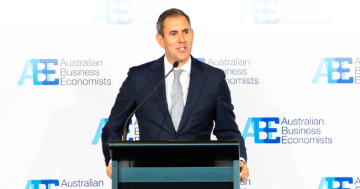Jamie Williamson* says new analysis has found women-led super funds are outperforming their competitors.
 Women-led MySuper products have outperformed on average by a consistent 0.3 per cent per annum over three, five and 10 years, new analysis shows.
Women-led MySuper products have outperformed on average by a consistent 0.3 per cent per annum over three, five and 10 years, new analysis shows.
Rainmaker Information looked at the performance of 18 women-led MySuper products, being those with women in senior positions of fiduciary influence, like chair, chief executive or chief investment officer, or where the majority of trustees are women.
The sample represents $450 billion in funds under management.
Using data to June 2022, the research, spearheaded by research manager Pooja Antil, found that over three years the funds outperformed by 0.25 percentage points, by 0.31 percentage points over five years, and by 0.27 percentage points over 10 years.
Rainmaker said that while 0.3 percentage points might seem a trivial margin, it actually equates to about one quarter of average fees.
“The Rainmaker IWD performance analysis shows that funds with a stronger women leadership outperform the industry-wide benchmarks over multiple time periods.
“The outperformance is not massive, but it’s consistent and large enough to have a long-run impact,” Antil said.
Assuming a base average return of 5 per cent, modelling of the 0.3 percentage point outperformance for a member from age 25 through to 67 sees $43,000 added to their super balance, or about 7 per cent more.
If the base average return is 6 per cent, the result almost doubles to $76,000.
Diving into the equities holdings of the products, the research found women-led funds held slightly more concentrated Australian share portfolios, as at June 2022.
“The proportion in the portfolio held in their top 50 AE stocks was 78 per cent for the women-led products vs 71 per cent for the other MySuper products (men-led products),” Rainmaker said.
“This same slightly higher concentration tilt was also evident for their international share portfolios.
“The proportion in the IE portfolio held in their top 50 stocks was 31 per cent for the women-led products vs 27 per cent for the other MySuper products.”
BHP, CSL, Commonwealth Bank, NAB and Transurban Group are the most favoured local stocks among women-led funds, while the favourites for the male-led products were BHP, CSL, Commonwealth Bank, NAB and Macquarie.
By sector, women and men favoured materials, banks, energy, pharmaceuticals and diversified financials.
However, women-led funds were structurally much more exposed to the transport, banking, food and diversified financials, Rainmaker said, while male-led funds were more exposed to healthcare, materials, professional services, energy and media.
In international equities, women-led funds looked to the US with more exposure to Microsoft, Alphabet, Apple and Amazon.
Male-led funds looked to Asia, with higher exposure to Taiwan Semiconductor, Tencent, Alibaba, and Samsung.
“With more than three decades behind us since superannuation was introduced, while women leaders still haven’t been able to make it a 50:50 ratio in leadership roles, they are narrowing the gap.
“But that we even focus on it is a big hint in itself as to why it matters,” Antil said.
“The logic is simple, to be able to think diversely and recognise a broader range of investment opportunities, there must be diversity in boards of trustees and top management of super funds.
“Gender diversity is not the only manifestation of diversity, but it’s a crucial one.”
Agreeing, Rainmaker Information executive director of research Alex Dunnin added: “The results of the Rainmaker 2023 IWD superannuation study affirm that one of the best indicators that you’re in a smartly-led super fund is whether it has a diverse management team.”
“Having a significant number of women in this team is one of the easiest markers super fund members should look for.”
In 2021, Rainmaker research found one-third of leadership roles within super funds were held by women, being chair, trustee director, or chief executive.
At that time, 11 of the 13 funds with above-average proportion of women in leadership roles outperformed over three years.
*Jamie Williamson is Editor at Financial Standard.
This article first appeared at financialstandard.com.au.











